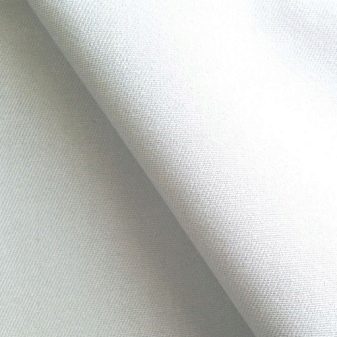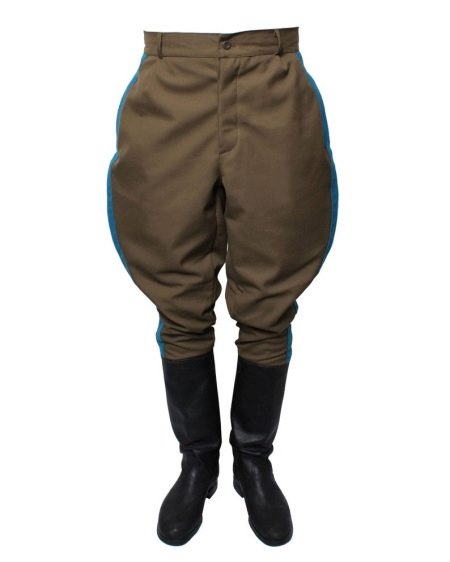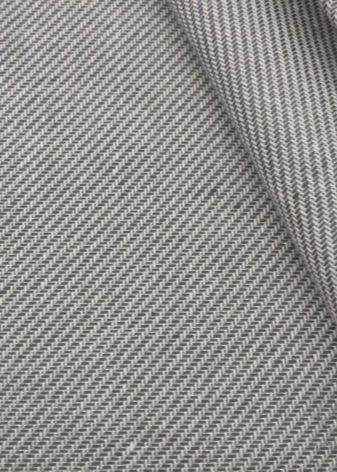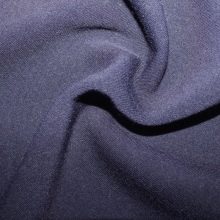Overview of the "diagonal" fabric and how to care for it

Almost every person has heard the name of the fabric "diagonal" at least once in his life. Currently, this material is one of the most demanded in the garment industry. In this article, we will take a closer look at the diagonal fabric, as well as learn about the rules for caring for it.


What it is?
The name "diagonal" was given to the fabric for its appearance. Diagonal matter is in great demand today, it is used in a huge number of industries. The peculiarity of the weaving of its threads led to the fact that a characteristic narrowed scar is formed on the surface. It stretches at an angle of 45 degrees.
Diagonal is a relatively young fabric that quickly conquered the market. Previously, it was used in the production of military uniforms, but today many varieties of such material have been developed. Thanks to this, the diagonal has become universal, used in different directions of sewing production.


History
When exactly the material under consideration, which has a diagonally directed scar, was made for the first time, historians find it difficult to answer. There is an opinion that this matter was invented in the 17th century. The diagonal enjoyed its maximum level of popularity in the late 19th - early 20th centuries. Diagonal and breeches are concepts with a single meaning.
It is worth noting that the name of the style of popular trousers is due to military actions that took place in the distant past. French general Gustave Gallifet was seriously wounded in the thigh area, but he was not going to leave the service because of this.

To ensure the proper degree of comfort, Gustave developed a special style of trousers that fit to the upper part without excess density. The general chose textiles with a characteristic diagonal rib as the main woven material for sewing such products, since it was originally distinguished by a high level of strength.
The breeches trousers model quickly gained immense popularity, as it attracted people with a high level of comfort and practicality. A similar thing became widespread, quickly finding itself in the role of an attribute of a military uniform. During the First World War, the material in question was produced using wool threads. In the current textile industry, similar materials are extremely rare, acting as a kind of exception to the rule.


Views
The fabric called diagonal is subdivided into several types. Let's consider a description of each of them.
-
"Suit". From the direct name of this variety, we can conclude that it is used in the production of business suits. In the manufacture of this option, cotton is used, to which synthetics are mixed together with polyester fibers. As a result of such combinations, light and elastic variations of quality canvases come out. In addition, the "suit" demonstrates a reduced percentage of shrinkage after washing.


- Crepe diagonal. It is characterized by weaving twill-look threads. Due to this, a scar is formed on the surface of the matter, characterized by a diagonal placement. In the production of this option, components such as wool and synthetic fibers are used. The crepe diagonal is an improved variation of the diagonal, intended for the manufacture of items of the elite class.


- Smooth-haired. The composition of this category corresponds to GOSTs, can be based on synthetic or cotton fibers (cotton variations are usually produced in black, beige, with khaki shades). The threads are interwoven with each other at an angle of 45 degrees, resulting in diagonally directed scars. Smooth-haired garments are breathable with the highest level of comfort. In smooth-haired diagonal clothes, it is not hot, there is no feeling of discomfort.


There is another type of diagonal - footer. The weave of this harsh and coarse fabric is partially altered so that the material does not cause discomfort when it comes into contact with the human body.
There are several subspecies of this material.
-
Single strand. It is a thin natural fabric made from cotton. It is often used to make garments for children.
-
Double-strand. It has a small, but noticeable fleece. Synthetic ingredients are added to double mixed textiles. A two-thread footer is often used for the production of home clothes, as well as tracksuits. The considered variety has one more name - two-thread.
-
Three-thread. Has a thick and elongated pile, can be suitable for the manufacture of high-quality and warm outerwear.



Top manufacturers
Consider a small list of the best manufacturers who make high-quality and practical diagonal fabric.
-
Excellent materials are produced by domestic companies. The largest production volumes were observed at OOO Vozrozhdenie, OOO Krasnaya Talka, Ivanovskiy Textile, OOO Zima, etc.
-
Diagonal of the highest quality can be found among the products of Izmailovskaya Manufactory, Kirovskiy Combine of Artificial Leathers.
-
A very good diagonal is also produced by Belarusian manufacturers, as well as factories in Uzbekistan and Kazakhstan.


Areas of use
Due to the high parameters of safety, shape stability and strength, the diagonal fabric is used in different production conditions. The following products are sewn from this fabric:
-
army uniforms (mostly camouflage products), equipment for tourism (including tents, backpacks, awnings, items of clothing);
-
special clothes, uniforms (very convenient and comfortable all-season things for service personnel are made from natural material, and mittens and work gloves are made from harsh fabric);
-
office clothing, school uniform;
-
products made in the militarized military style (in this case, khaki-colored fabric is often used);
-
high-quality elite outfits are created from silk and blended suit fabrics (we are talking about business suits, solid trousers, classic dresses, chic skirts);
-
material options, supplemented with special impregnation, are used in the production of high-quality models of jackets, raincoats, overalls;
-
a diagonal with a woolen base is used in the production of outerwear, for example, coats or cardigans;
-
there are also rubberized types of diagonal matter, of which chemical protection suits are made, as well as high-quality overalls;
-
blended and synthetic fabrics are used in the manufacture of upholstery materials;
-
the type of fabric in question is widely used in shoe production - excellent models of footwear for everyday wear are obtained from it.


Care Tips
The diagonal must be properly looked after so that it lasts as long as possible without losing its positive qualities. Let's take a look at some useful tips for caring for this fabric material.
-
Items made from diagonal are washed based on the recommendations for the care of natural fabrics. Temperature indicators of water should not reach over 40 degrees Celsius. Diagonal items must be washed separately from other items. In this case, bleaching compounds containing chlorine must not be used.
-
If such products are squeezed out, then there should be only the average revolutions of the washing machine drum.
-
Drying of things is required only in their fully unfolded state. Products should be kept in a ventilated area or outdoors (in shade).
-
It is allowed to iron products from the diagonal only from the wrong side. In this case, the temperature of the soleplate of the iron should be no more than 170 degrees Celsius.
-
If stubborn dirt is present, then you can turn to dry cleaning of diagonal items. If the material is too thin, then such processing will no longer be suitable for it.










